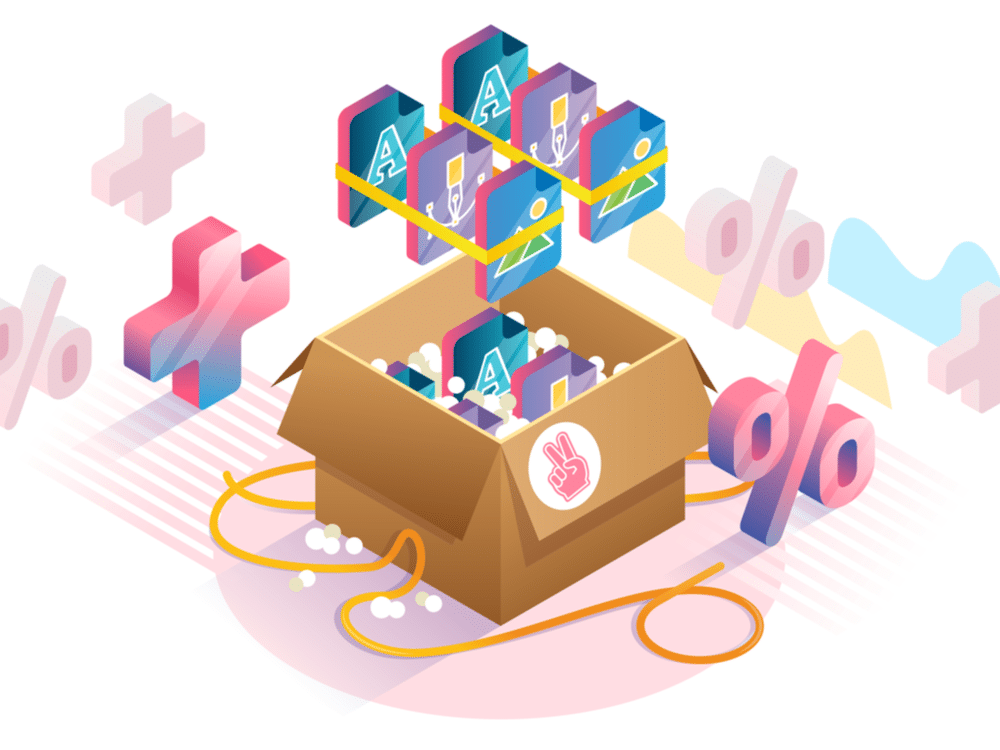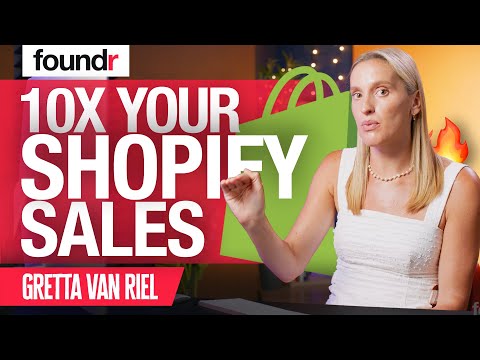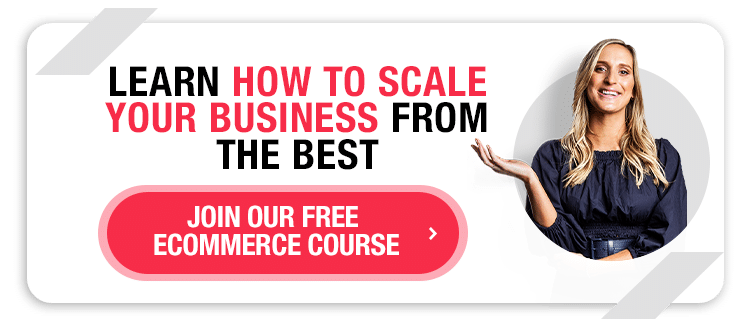Want more revenue from fewer customers? Upselling is the way to go.
Contrary to its stereotype as a shady sales strategy (got to love a good alliteration), upselling is a win-win for businesses and customers. Used correctly, upselling boosts the customer experience, cements stronger relationships, and improves your bottom line—and who wouldn’t want that?
Those promises put a lot of pressure on upselling, but this tactic is up to the challenge.
Let’s look at upselling in action.
A customer visits an ecommerce store to purchase some supplements. After shopping around, they head over to the checkout and find they can earn free shipping if they spend just $10 more. You recommend a larger (more expensive) supplement so they can save money and get more product. Not wanting to pay for shipping (and knowing the expiration date is far out), the customer throws the larger supplement into the cart and checks out.
That’s an example of a non-pushy upsell.
Unfortunately, many businesses upsell wrong and come off as pushy, insensitive, and money-hungry instead of helpful, caring, and customer-centric.
We want to help you become the latter.
First, let’s cover the definition of upselling and dive into the meaning of “upsell.” Then, we’ll show you a handful of tips and best practices to get you upselling like a pro.
What Is Upselling? (Definition, Meaning, and Examples)
Upselling is the art of persuading a customer to upgrade their product or buy more of it. For example, when you’re about to buy a pair of shoes but discover a better (more pricey) waterproof version, you’ve been upsold.
Many marketers confuse the terms upselling and cross-selling and use them interchangeably, but they’re not the same thing. Both tactics boost your sales, but they operate slightly differently.
Upselling vs. Cross-Selling
Cross-selling is recommending items that are relevant to a purchase. For example, when someone buys a hamburger, a restaurant can cross-sell to them with fries and a soft drink.
Upselling is recommending an upgrade to a purchase. Using the same example, when someone purchases a hamburger, a restaurant can recommend additional toppings (bacon, caramelized onions, avocado) for an extra price.
Real-Life Upselling Examples
Enough abstract illustrations—let’s look at some real-life upselling examples in action.
Spotify
Everyone starts as a free user on Spotify, but the music-streaming platform knows how to get you to hand over your credit card. They incentivize users with compelling perks:
- Download music onto your devices
- Enjoy non-stop music with no ads
- Play any song
- Skip as often as you’d like
Spotify keeps its pricing super simple. You can buy an individual account, duo account, or family account. All offer basically the same thing.
Spotify welcomes new free users to the platform, but they’re not pushy with their Premium plan upsell. They use banner ads and in-stream ads occasionally to remind you how your music-listening experience could be better with Premium, but that’s about it. Spotify’s upsell is so compelling that music fans can’t help but throw their credit card down—much like anyone who shops on Amazon needs a Prime membership (it practically pays for itself).
1-800-Flowers.com
1-800-Flowers.com has mastered the art of the upsell with a non-sleazy upgrade approach. First, they give shoppers a multitude of flower options. Once the customer has sifted through countless bouquets and settled on one, they’re then taken to a pre-checkout page where 1-800-Flowers.com presents them with some compelling add-ons.
Customers can add a heart-shaped box full of truffles, pretzel rods, fruit, a clear vase, and even a digital movie. These are all upgrades to make their heartfelt gift “extra special.”
Apple
It’s nearly impossible to leave the Apple Store with just the items on your shopping list. You’ll likely check out with more storage, a better camera, and brand-new features on the latest-and-greatest iPhone or iPad. They’re not pushy, either. Apple just knows how to make the right suggestions at the right time to get you to continue upgrading.
You’re already spending $800—what’s another $200 going to hurt? Right? Right.
If Apple doesn’t get you at checkout, they’ll send you friendly product updates, reminders, and upgrade suggestions via your email inbox—just you wait.
12 Upselling Tips and Best Practices
1. Personalize Your Recommendations
Upsells will look different for each customer—you can’t copy/paste your recommendations. Suggesting the wrong products could hurt your relationship with the customer, and you might lose the chance at an upsell (or any sell) after that.
You need to personalize your recommendations, and that involves a few elements:
- Product: Your upgrade needs to be relevant to the customer’s needs. Listen to their wants and requirements—don’t try to sell them on a product that goes above and beyond what they’re looking for.
- Price: Start with a small upgrade. If your customer has finally found a new camera, they might not be willing to pay 2x the price for an upgraded version. However, they might be willing to pay a little bit more for an improved lens or case.
- Timing: Sometimes, checkout isn’t the best time to pitch your upsell. You might need to wait a month or even a year. Let your customer use your product and gain trust in your brand. Later, they’ll be ripe for an upgrade.
2. Limit the Number of Options
Don’t overwhelm your customers and cause paralysis by analysis. When you make an upsell recommendation, keep it short and sweet. Offer too many options, and you might scare your buyer from the upsell and the original sale.
Follow the first tip and personalize your recommendation. Once you find the right suggestion, perfect your pitch and nail your delivery.
For example, imagine going to a car dealership and finding the car you love. When you’re getting ready to seal the deal, the salesperson tells you there’s an all-leather interior option for just a few thousand extra—not bad, right?
Now, imagine you’re about to put pen to paper, and the salesperson recommends 3 other (more expensive) cars that might be a better option. Sounds a bit overwhelming, doesn’t it?
3. Focus on Benefits—Not Features
When persuading your customer to upgrade, don’t sell them on new features—sell them on new benefits.
Is new software, hardware, or storage capacity worth extra money? Maybe yes. Maybe no.
But what about relatable benefits like these:
- Capture more never-forget family moments with upgraded cloud storage
- Win back valuable time every day with faster upload and download speeds
- Earn more money every month by finding higher-quality leads
Help your customers see and feel the impact of an upgrade.
4. Create Product Bundles
You don’t need different versions of a product to upsell—you can also bundle existing items. For example, you can sell 1 stick of deodorant for $3 or 2 sticks for $5.
That’s bundling.
You can also combine similar items into a more affordable package. Instead of just selling your shampoo, conditioner, and body wash separately, you might create an all-in-one bundle for a discounted price.
Not only does this help you earn a bigger sale, but it also helps your customers out. Customers don’t always want to shop around for each individual item that pairs well with another—they liked hand-crafted bundle recommendations (and discounts) from brands who are the resident experts.
For example, shoppers don’t want to build their paddleboard kit with a board, lifejacket, waterproof case, and whistle—they want to just buy a bundle and get out on the water.
Bundling often lowers your profit per unit but boosts your overall revenue.
5. Offer Different Pricing Options
As hard as you try, it’s hard to create a one-size-fits-all price point to satisfy all your potential customers. Instead of giving your customers the option to take it or leave it, give them a few different choices.
Now, don’t go overboard, or you’ll step on the toes of tip #2: Limit the Number of Options.
However, there’s a safe middle ground between too much and too little that’ll help you convert the highest amount of customers. Find that sweet spot to turn more visitors into customers.
6. Solve Problems
Your upsells should alleviate your customer’s pain points. Find those pain points, and offer upselling options to solve them to different degrees.
For example, customers might be tired of running out of cloud storage—it’s a real headache that interferes with workflow efficiency and makes it difficult to prioritize what gets kept and what gets deleted. Your solution could be upgraded cloud storage.
An example of an upsell that doesn’t solve problems is when a sales rep tries to get a family to buy extra data for their phone plan when they never get close to reaching their current maximum. That upsell isn’t offering any benefits or easing pain points—it’s just poking around for more money.
7. Use Social Proof
Help your customer visualize what the upgrade can do for them. Sometimes, this is difficult to explain with bullet points and exclamation marks. This is where social proof comes in handy.
Use reviews, testimonials, and case studies to show your buyers how an upgrade helped other customers. Ideally, you want to find a story that they can relate to—one that makes them think, “Hey, that sounds like me.”
Once they see how an upgrade improved a situation for someone similar, they’ll be more inclined to consider it for themselves.
8. Make Upsells a Natural Part of the Product Experience
Your customer shouldn’t have to talk to sales or visit your pricing page to learn about upgrade options. Make them part of the customer experience.
For example, someone on a basic social media management plan will have access to fundamental features, but the advanced ones will be locked behind higher tiers (yet still viewable). They’ll constantly be enticed by the cutting-edge functionality until they ultimately make the upgrade.
Car dealerships know how to do this. You often have to walk past stacks of premium high-performance tires on your way to test drive and purchase a new vehicle. The salesperson doesn’t have to point them out to you—they’re already on your mind when you start the discussion about add-ons.
9. Create Urgency
You don’t want to come off as pushy, but creating a sense of urgency provides just the right amount of pressure to encourage someone to make an upgrade.
You can accomplish this with time-sensitive deals and limited quantity offers. If the customer is interested, they’ll be more inclined to act now to avoid missing out on the deal. Create a sense of urgency with well-timed email follow-ups and targeted social media ads.
10. Remember the Rule of 7
The rule of 7 states that it takes an average of 7 interactions before a customer will make a purchase (or an upgrade). You don’t need to convince your customer to upgrade at checkout or with your first email or text message—it might take a little bit. And that’s OK.
11. Consider Upselling Alternatives
If you can’t get your customer to purchase additional items or a more expensive upgrade, consider what you can get them to do. Maybe you can get them to sign up for your email list or text marketing campaigns, and that’ll give you a chance to upsell them later.
Quality customer data can be more valuable than a one-time sale. A sale brings in money, and then it’s gone. Top-notch customer data and contact information enable you to create a lifetime customer—one that might buy from you every month or every year.
12. Downsell When Appropriate
Downselling is when you offer a lower-priced item or version to more appropriately fit your customer’s needs. It’s the ultimate form of customer service.
This might seem counter-intuitive, but hear us out. What do you care more about, a few extra dollars each month or lifetime customers?
For example, if a customer is about to purchase an advanced tier that exceeds their needs, you could encourage them to start small and potentially upgrade later. You’ll lose a few dollars with the downsell, but they’ll likely be smacked in the face with your honesty and transparency—and that admiration is worth far more than a slightly higher sale.
Upgrade Yours Skills to Upsell Like a Pro
Upselling is a game-changing sales and marketing tactic, but now you need to master the mediums. Whether that’s Instagram, YouTube, Facebook, or your blog, we can help you get up to speed on just about any channel.
Check out our collection of free classes to upgrade your skills. They’re zero-commitment, no-money-down classes. We might try to upsell you later on other courses (*wink wink*) but not today.
Sign up for a class now and try your newfound upselling talent on a channel your customers love.
The post 12 Upselling Tips and Best Practices to Boost Your Sales appeared first on Foundr.




